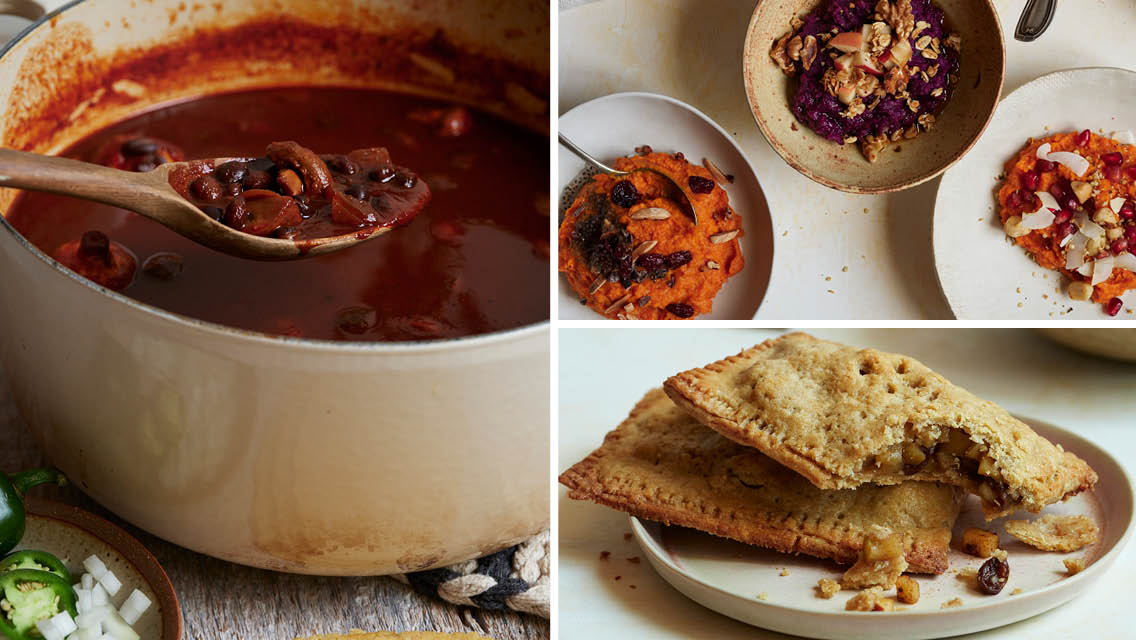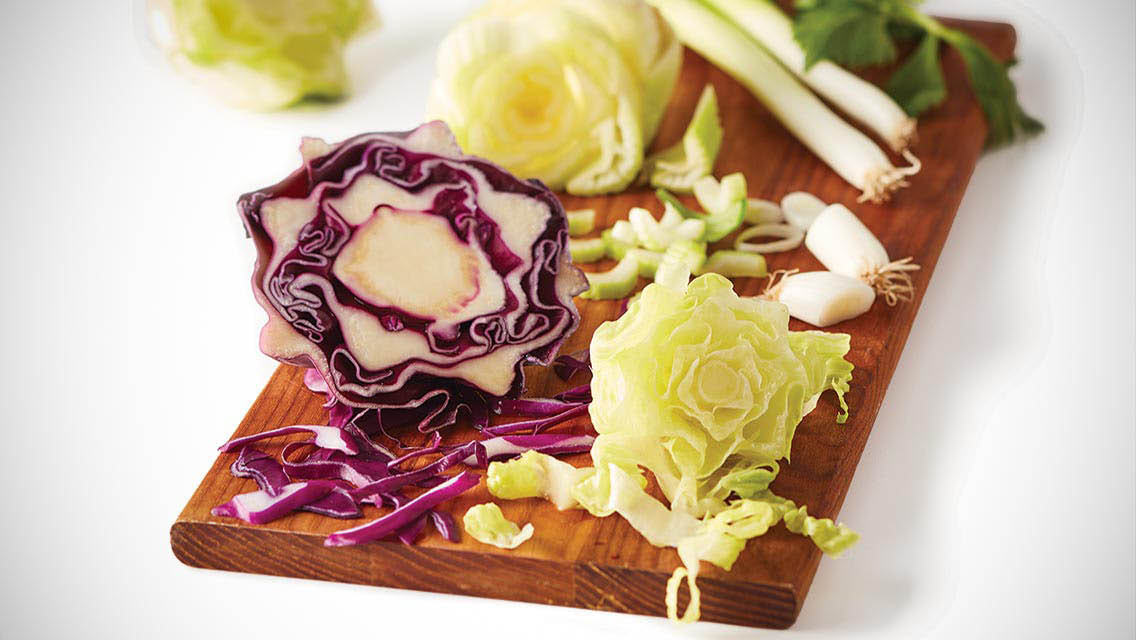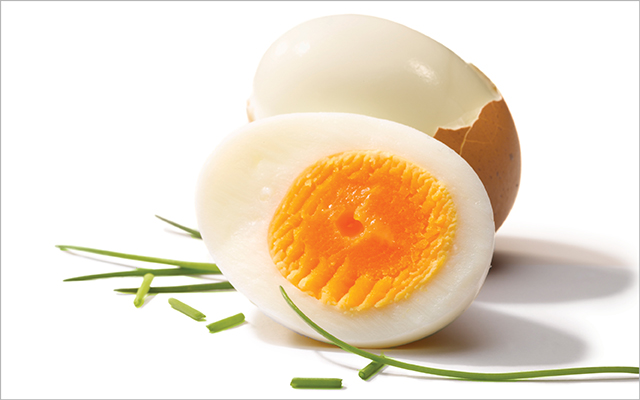Back in my latchkey-kid youth, most of my days started and ended in the kitchen — with cold cereal I made for myself. I climbed the cabinets to reach for the day’s sugary concoction; mini-marshmallows or oddly colored faux berries clanked into the bowl. My mealtime rituals mostly involved steadying the bowl on my lap while I played Atari.
Perhaps these images are why I refer to myself as a “noncook.” Or maybe it’s because I grew up not really appreciating food. My mom never liked cooking. Aside from the ecstasy of eating raw cookie dough, we rarely engaged in the joy of culinary activities.
Nevertheless, even as a noncook, I’ve come to believe that there is no more radical act of self-care than selecting, preparing, and eating food that truly nourishes you.
I’ve long wanted to get better at this, and picking up some cooking pointers from a pro seemed the logical next step. So a couple of months ago, I decided to sign myself up for a cooking class.
I looked into options through natural-food co-ops and gourmet shops, but ultimately it was a community-ed class that caught my eye. The location was convenient, the “kitchen basics” description appealed, and at just $72 for six sessions, the price was right for my budget.
As hungry for knowledge as for home-cooked food, I peer into the instructor’s vintage green Farberware pot. The aromatic steam from onions, celery, and carrots tickles my nose. As I inhale the stewing scents, I think of the soups my sisters send home with me when I visit. Gifts of love and nourishment, they are the only homemade soups I have much experience with. I’ve never made a pot on my own, but that is about to change.
Twelve of us have gathered in this local high school kitchen, each with different needs, interests, and cooking abilities. One classmate wants to feel more confident straying from a recipe. Another, 14-year-old Gabe Russell of St. Paul, Minn., is here to pick up a few new techniques. Unlike me, Gabe learned to cook from his mom. He even possesses his own No. 3 vegetable cleaver, a fancy, versatile implement that cuts through the thickest vegetable and fruit rinds with ease.
Several couples are here, too, including retired naturalist Dan Newbauer of Apple Valley, Minn., and his wife, Mary Jo. Dan explains, “We cook differently. I like to experiment, and when I win, I win big. But when I lose, I lose big, too.”
We squeeze around the countertop stove to gain a better view of Jan Zita Grover, our seasoned instructor. Observing Jan prepare a meal is like watching the History channel, Food Network, and Travel Channel simultaneously. Her goal is to instill students with the confidence to improvise, so she arms them with basic information and simple techniques for preparing quick, healthy meals.
During today’s soup lesson, she explains how to add stock a bit at a time so the soup doesn’t get too watery. As long as the vegetables make “islands” and stay floating, you have the right balance. Along with the island technique, she explains the history of Farberware, the differences between Chinese and Japanese knives, and how herbs that “grow together, go together.”
In this course, we’ll learn to make soup and pizza. (Not surprisingly, homemade pizza is a lot better for you than the delivery kind.) We’ll also learn how to pan-fry, stir-fry, and braise.
Each class teaches specific kitchen skills. We’re then assigned homework that requires us to practice those skills. At the beginning of the next class, we all share photos of what we made at home.
After the soup lesson, one classmate shows mouthwatering pictures of his French-onion soup, while another offers snapshots of a hearty stew.
These huddles provide opportunities to celebrate, commiserate, and cheer one another on.
Talking about food stirs our appetites, especially since class is held at dinnertime, so we dab crusty sections of baguette in oil and vinegar while we share recipes.
We learn plenty of tricks in these roundtable forums, too. In addition to teaching basic food preparation, Jan distributes handouts on how to verify that our stove and refrigerator settings are accurate, as well as tips on selecting and caring for cast-iron pans and cooking knives.
It’s as true in the kitchen as elsewhere: Knowledge is power.
Venturing Forth on My Own
For a pan-frying assignment, I chose salmon. I hoped that cooking up a fillet might prove less challenging than our previous assignment of searing a chicken thigh. My poultry had ended up with an unnerving too-pink middle, so I needed a confidence boost.
Determined not to let that fowl incident turn me into a chicken, I stopped at my local co-op after work and picked out the fish along with a nice head of baby bok choy. I had a feeling its crisp stalks would hold up well and complement the tenderness of the fish. Maybe I was getting the hang of this cooking thing after all.
The next class presents me with an opportunity to test my metal, literally. Prior to the course, I had inherited a cast-iron skillet, and while I hadn’t used it much, its sturdiness gave me confidence. A timeless vestige in a throwaway world, it felt like an old friend. When I learned from Jan that using iron cookware adds iron to your diet, I liked it even better. (For more on this, see “Iron Chef: Cooking With Cast Iron“.)
I click on the gas and put my trusty pal on the stove. As my pan warms, I clean the bok choy, then mince lemon, garlic, and rosemary for the fish. Since salmon has such a lovely flavor, I keep the seasoning light. When the pan is warm to the touch, in goes the olive oil and the pan starts singing to me, just as Jan said it would.
I enjoy stirring the garlic and rosemary around in the olive oil amid the sputtering and whistling. I add the salmon, and the song continues. (Had the pan gone silent, this would have been a sign that I needed more oil or less food in my skillet.) I follow Jan’s advice that in cast iron “things stick until they don’t.” When they don’t, that’s your cue to flip them.
This technique was new to me, and helpful. I flip the fillet with confidence. I add the bok choy, spritz some lemon on it, and give it a quick sauté. After a few minutes, I remove the pan from the heat and place my fillet on top of some fried rice I’d made and garnish it with two pieces of bok choy on each side.
Since I’d so carefully prepared this meal, I decide to actually sit at my table with a cloth napkin in my lap and experience every bite. The salmon is tender with a crisp outer edge. I’m surprised how the bok choy has picked up notes of the garlic, lemon, and rosemary.
I’m not sure it’s a masterpiece, but this taste of success is enticing. It’s time to try cooking for an audience.
Soup’s On
I’ve always considered soup the ultimate challenge. I’d seen my sisters and friends make pots with ease, but I never understood how they did it.
I was happy to have the process demystified during class. Jan explained that heavier items like carrots, onions, and celery are added first; more tender items, like greens, go in last.
Since I can’t eat an entire pot of soup myself, I invite a couple of pals over for dinner during homework week. I’ve rarely had the chutzpah to ask anyone to sample my food. I always worry about things being undercooked or overdone — or all getting done at the wrong times so you end up eating the main course after the side dishes.
It turns out that soup is the ultimate safety, because everything cooks together and can’t finish at different times. You taste it until it’s done, and it’s hard to overdo.
It also happens that soupmaking can be a calming meditation. As I wash ingredients for my vegetable soup with white beans and quinoa, I admire the veggies’ vibrant hues and breathe in their earthy fragrance. I slice the carrots into angled pieces, rotating them after each cut. Jan explained that the finer the slice, the greater the surface area in contact with the water, infusing that vegetable’s flavor more strongly into the broth.
While the soup cooks, my pals and I sit around my dining-room table gabbing. After a while, the outcome of the experiment starts to seem less important; sharing the evening with my two friends is the real reward.
Still, when we do eat, it’s nice to hear my friend Jennifer say, “I would never have guessed this was your first soup.” But my real praise-from-Caesar moment comes when my friend Karen, a joyful cook in her own right, tells me that the chard is perfectly cooked.
What is perfect to me is discovering that cooking is about a whole lot more than making better meals. It’s a chance to slow down and appreciate the moment. It’s a ritual that feeds hearts as well as stomachs, and it helps build relationships and communities. I was never going to find all that inside a box of cereal. But I’m glad I was able to find it somewhere else in the kitchen.




This Post Has 0 Comments